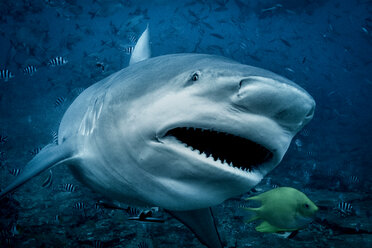What led to the fatal shark attack at Kylies Beach — And how was one swimmer saved?

What led to the fatal shark attack at Kylies Beach — And how was one swimmer saved?
A young woman has died and a man remains in hospital with severe injuries following a shark attack at an isolated beach on the New South Wales mid-north coast. Authorities say the pair, both believed to be in their twenties, were swimming at Kylies Beach in Crowdy Bay National Park when the incident occurred early Thursday morning.
Emergency services were called shortly after 6:30am when fellow beachgoers reported that the swimmers had been bitten by what investigators later determined to be a large bull shark. Witnesses at the scene attempted to help the victims before paramedics arrived.
NSW Police Chief Inspector Timothy Bayly said the situation unfolded quickly, with bystanders taking immediate action to support the injured man. According to NSW Ambulance Superintendent Joshua Smyth, one witness used available materials to fashion a makeshift tourniquet on the man’s leg — a decision paramedics say likely prevented a more serious outcome.
“The actions of the bystanders were exceptionally courageous,” Smyth said. “They placed themselves at risk during a highly confronting situation, and their efforts helped stabilise the surviving victim until emergency crews reached the scene.”
Despite efforts to save her, the woman died before first responders arrived. The injured man was later airlifted by the Westpac rescue helicopter to John Hunter Hospital in Newcastle. He was initially listed in critical condition but was later reported to be serious but stable.
Preliminary forensic analysis by the Department of Primary Industries (DPI) indicates that a large bull shark was responsible for the attack. Bull sharks are known to frequent near-shore environments and warmer waters, which can increase the probability of encounters with swimmers. Marine ecologists note that while rare, multiple bites in a single incident can occur, especially if the shark is foraging and attempting to deter competition from other animals.
In response, authorities deployed several “smart” drumlines — non-lethal technology designed to attract, tag, and relocate sharks — along Kylies Beach. The location does not have permanent shark-detection equipment, and nearby monitoring stations did not detect shark activity on the morning of the incident.
Surf Life Saving NSW announced that Kylies Beach and surrounding areas would remain closed for at least 24 hours. Drones have been deployed to scan the coastline for potential hazards and confirm whether the shark remains nearby. The organisation’s chief executive, Steve Pearce, extended condolences to the families affected and urged the public to avoid entering the water while risk assessments continue.
The tragedy adds to a series of shark-related incidents reported in Australia this year. It marks the fifth fatal shark bite in 2025, occurring less than three months after a widely reported fatal attack on Sydney’s northern beaches. While fatal encounters have decreased over the past century due to rapid emergency responses and improved first-aid availability, marine scientists say the overall number of shark bites has risen over the last two decades.
Researchers attribute this trend to several factors, including coastal population growth, climate shifts affecting marine species’ movements, increased participation in water sports, and changes in prey distribution. However, scientists emphasise that the likelihood of a fatal shark encounter remains extremely low.
Authorities have launched a formal investigation, and a report will be prepared for the coroner. NSW National Parks and Wildlife Service notes that Kylies Beach, accessed via unsealed roads and lacking major facilities, is typically unpatrolled, which can complicate emergency response efforts.
FAQ
1. What type of shark was involved?
Investigators believe a large bull shark was responsible based on forensic evidence.
2. Were the victims swimming in a patrolled area?
No. Kylies Beach is an isolated and unpatrolled section of the coastline.
3. What safety measures were taken after the attack?
Authorities closed nearby beaches, deployed smart drumlines, and began drone surveillance.
4. How is the surviving victim doing?
He was initially in critical condition but improved to serious but stable condition.
5. Are shark attacks increasing in Australia?
Experts say overall shark bites have risen over two decades, but fatalities have decreased due to faster medical intervention.

